The 2018 Pyeongchang Olympics have brought with it a lot of drama- from the inherent tension between North and South Korea, to the Russian doping scandal, and just the high of competition overall. It’s only suitable that the pinnacle of all of this drama is represented by the bedazzling glitz and glamour of the costumes. Here are the most talked about fashion moments at the Olympics, and the designers behind them.
TEAM USA
Ralph Lauren has been the go-to designer for Team USA since 2008, but this year they upped the stakes with their new jackets featuring never-before-seen thermal heating technology, perfect for the icy slopes of Pyeongchang.
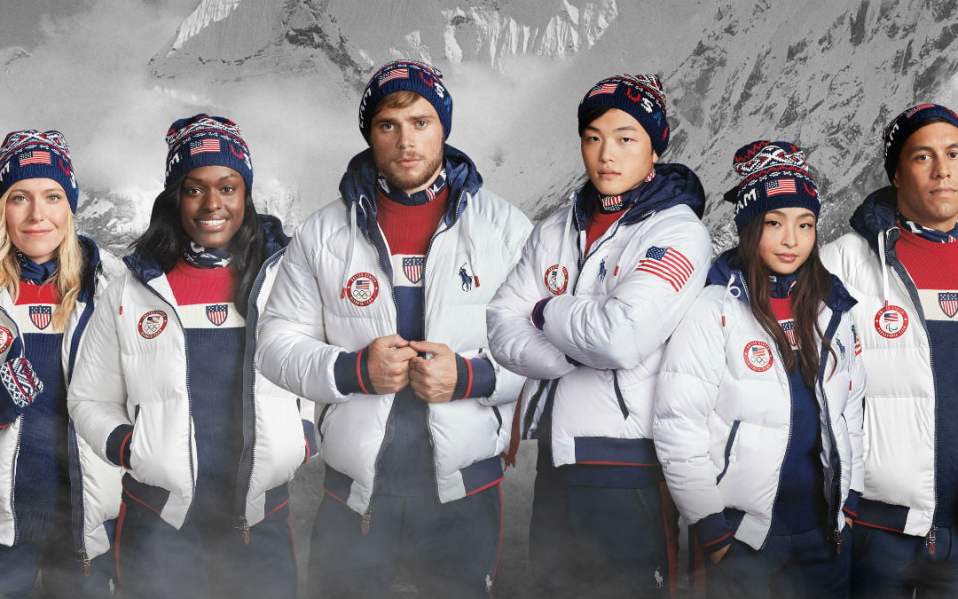
The heating system, exclusive to Ralph Lauren, is powered by carbon and silver electronic printed conductive inks bonded to the interior of the jacket in the shape of an American Flag, which is further connected to a battery pack that allows 11 hours of heat.
In addition to the jackets, the athletes will also be wearing Team USA knit sweaters, customised beanies and brown suede gloves with a Midwestern fringe detail reminiscent of those giant #1 hands that America is so fond of at baseball games. A sure fire attention-grabber at the opening ceremony.
Ralph Lauren commented in their press release that “the uniform celebrates the American spirit, with iconic pieces updated with modern details and technical fabrications.”
Johnny Weir and his “Hunger Games” inspired outfits
Although he hung up his skates in 2013, Johnny Weir is becoming a hot topic at the Pyeongchang Olympics due to his eye-catching fashion and biting commentary.
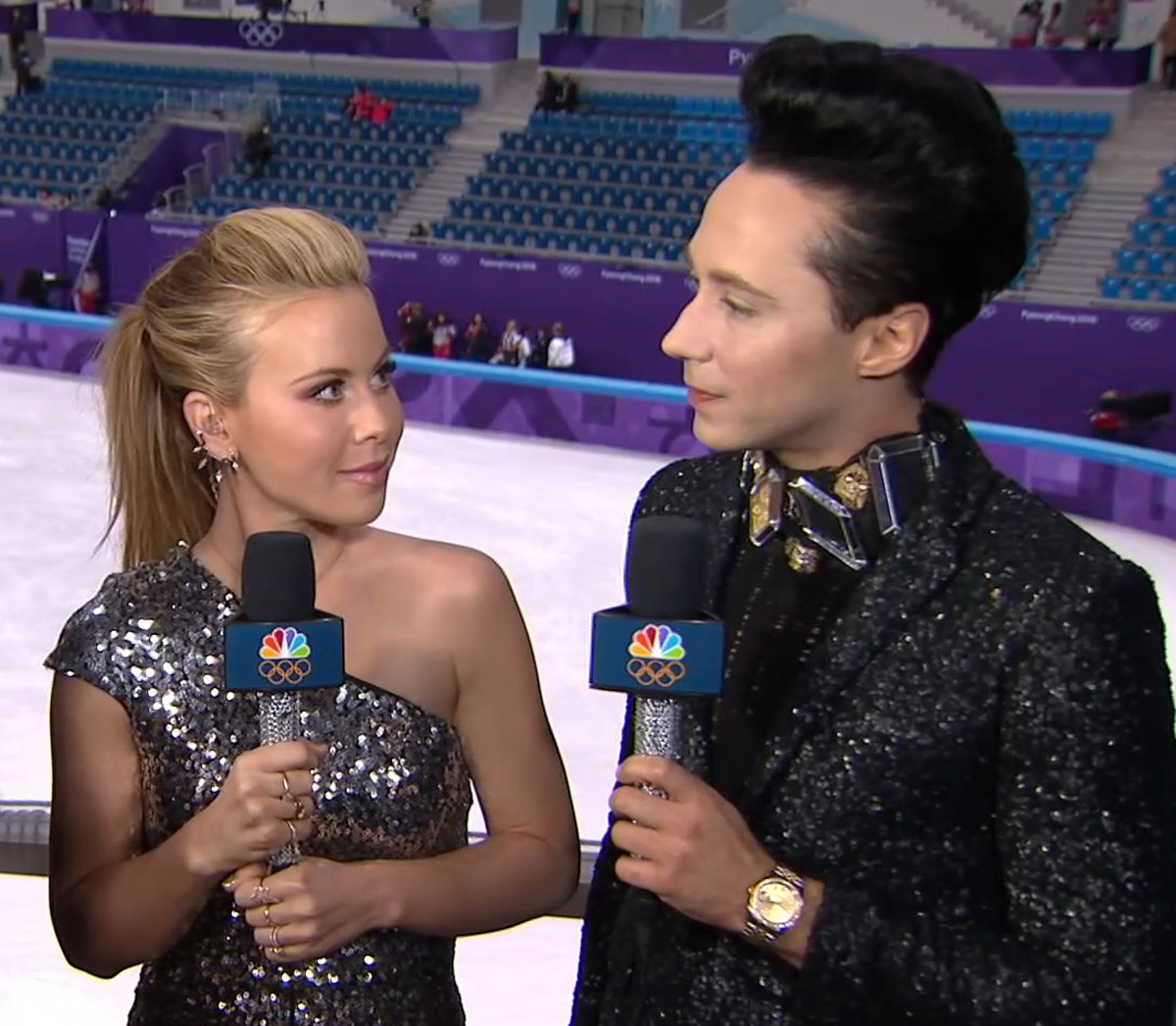
Weir is no stranger to the fashion world. In 2010, he opened the Be Unique fashion label with a line of $95 black jackets, and in 2011 he collaborated with website ‘e-dress me’ to create a line of six dresses. He had a hand in designing all of his own costumes, and even those of skaters Alexei Bychenko of Israel and Yuzuru Hanyu of Japan.
As he told The Hollywood Reporter:
“It was important that I felt pretty when I ice-skated. If I wore something — no matter how ridiculous — as long as I felt beautiful, I knew I would skate better in something that I felt good in…for me, a great skating costume is a costume that will make photographs; it will be something that you can see on the cover of a magazine. It could be something that you’ll have photographs of yourself in for the rest of your life, sitting on the medal stand while listening to your national anthem. And you look wonderful. That, to me, is a successful costume.”
Now retired, the 2018 Winter Olympics sees him taking on commentary in matching bedazzled outfits with his commentating partner, former Olympian Tara Lipinski. This draws comparisons with the fictional Hunger Games host Ceaser Flickerman, who Weir described as “…sort of my muse in preparing and getting ready” during the 2014 Sochi Olympics. As he told NBC, “now people are finally getting it. Only took them four years.”
While Weir has received praise and attention for his innovative looks, he has also received backlash for being too harsh on the skaters, calling them a “weak link”, “technically a disaster” and describing Nathan Chen’s performance as “the worst short program I have ever seen…from (him)”.
But Weir defended himself on Twitter, saying that he is a “commentator, not a “complimentator.”
“Explaining falls and rough skates is hard because I have been that skater, and truth can hurt. But I would never be able to do my job without telling the truth about every aspect of figure skating and the performances you’ll see.”
Adam Rippon
Adam Rippon made history this year as the first openly gay US athlete to compete in any Winter Olympics, and is completely embracing his self- appointed role as “America’s Sweetheart” through one of the most important mediums at a figure skater’s disposal – his costume.

The eye-catching electric blue costume he wore for his acclaimed performance in the team event boasted “a lot of Swarovski crystal…well into the thousands,” according to the costume’s designer Braden Overett.
A former competitive figure skater himself, Overett is well aware of the demands of an Olympic Figure Skating costume, and he makes sure to communicate with Rippon in a way that will result in the most glamorous yet functional costume possible.
“Honestly, it always sounds like a weird conversation,” Overett told The Hollywood Reporter, sharing that Rippon’s inspiration was once:
“a body floating into the sky, and every time the heart beats it’s like electricity pulsing through it…It’s like talking to a kid about a dream or a fantasy where rules don’t apply. It’s more about the overall effect and feeling and color … There’s no concrete inspiration”
Rippon’s most iconic costume to date took Overett three weeks to make, creating a masterpiece with only mesh, spandex blends, paint, an airbrush, glue and, of course, Swarovski crystals.
“I was airbrushing black and blue paint onto this white mesh base, and I was super excited about the sharp, dynamic contrast of the black on the white.” he told The NY Post. But the paint had dried sheerer than expected, looking “like a window” when Overett put his hand under it. But Rippon unexpectedly loved the look and pulled it off so well that Overett has received a wave of compliments about “gold accents (he) included in the costume”. Except, he says, “It’s not gold! It’s Adam’s skin!”
Having already won a bronze medal for the US, Rippon says upon going home he’ll go to Target and “get a bottle of Sauvignon Blanc Oyster Bay with the twist top.” But not before fulfilling his role as a newly hired Olympics correspondent for the NBC.
Vera Wang for Nathan Chen
Wang, a former skater herself, is understandably the right choice for a costume designer, having also designed costumes for Nancy Kerrigan, Evan Lysacek and Michelle Kwan in the past. Figure Skater Nathan Chen thought so too, which is why he contacted her immediately about his outfits for the 2018 Winter Olympics.
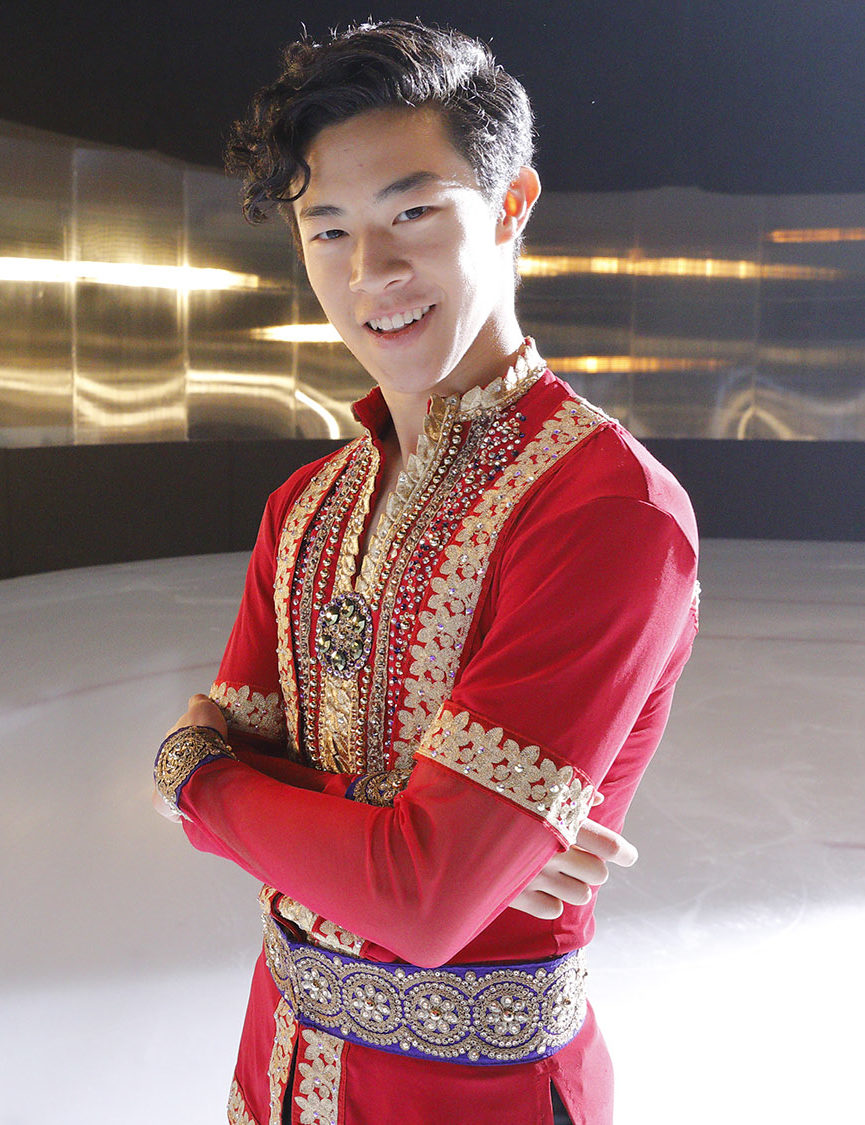
Wang’s experience means that she “understand(s) the physics” needed to make the costumes as efficient as possible.
“I think people are fooled by the nature of the costumes and the ease and the musicality and the choreography. It is an extreme sport,” she told PEOPLE magazine. “It’s not for the faint of heart…If one strap were to break, or if the beading on the sleeve gets caught when they turn, their whole Olympics is over.”
But Nathan Chen is definitely not faint-hearted. After starting off the Olympics placed a disappointing 17th the men’s free skate program, he went on to make Olympics history by being the first person to land five consecutive quad jumps during his last free skate program.
Together, Wang and Chen came up with monochromatic and minimalistic looks, with clean, simple black and white lines and zippers adorning his costumes. The only costume that was fully bejewelled was the imperial red structured suit that Chen wore when he made Olympics history.
“Vera’s knowledge and understanding of figure skating along with her extraordinary talent for design make this collaboration incredible,” said Chen.
“We took quite a long time designing the costume, making sure it matched the program…And it was a really fun process getting to work with Vera and her whole team; I didn’t realize there were so many people behind her designs, so it was really cool to be able to have that experience. The costume felt great on the ice.”
Russian Athletes under the Olympic Flag
Russian Athletes chose a very un-Russian minimalistic look this year, due to the fact that they are not Russian at all but “Olympic Athletes from Russia.” That is, according to the logo on their grey toned clothing.
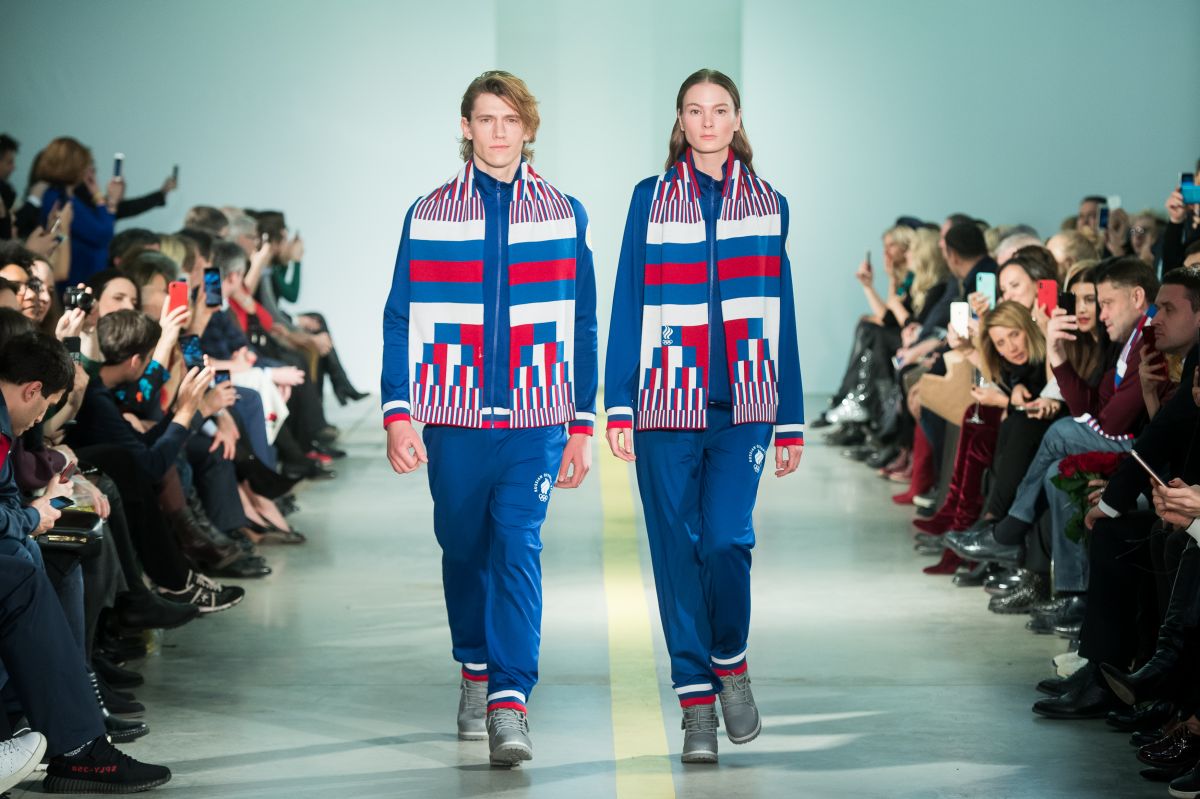
Due to the state-sponsored doping rampant among Russian athletes, the International Olympics Committee (IOC) ruled Russia was not allowed to compete at the 2018 Olympic games. However, they made an exception for those athletes with clean records, who had no association to their home country.
This proved challenging for the Russian team’s clothing supplier ZASPORT, as they were limited to only minimal colours. But they made it work by creating a variety of designs out of basic sportswear in the red, white and blue of the Russian flag, resulting in a casual, sporty-chic look. There are even cheeky references to the scandal, with ZASPORT’s collection featuring plain white shirt with the red and blue letters “I don’t do doping, I am ZASPORT”. Safe to say, this piece will not be featured at the Olympics.
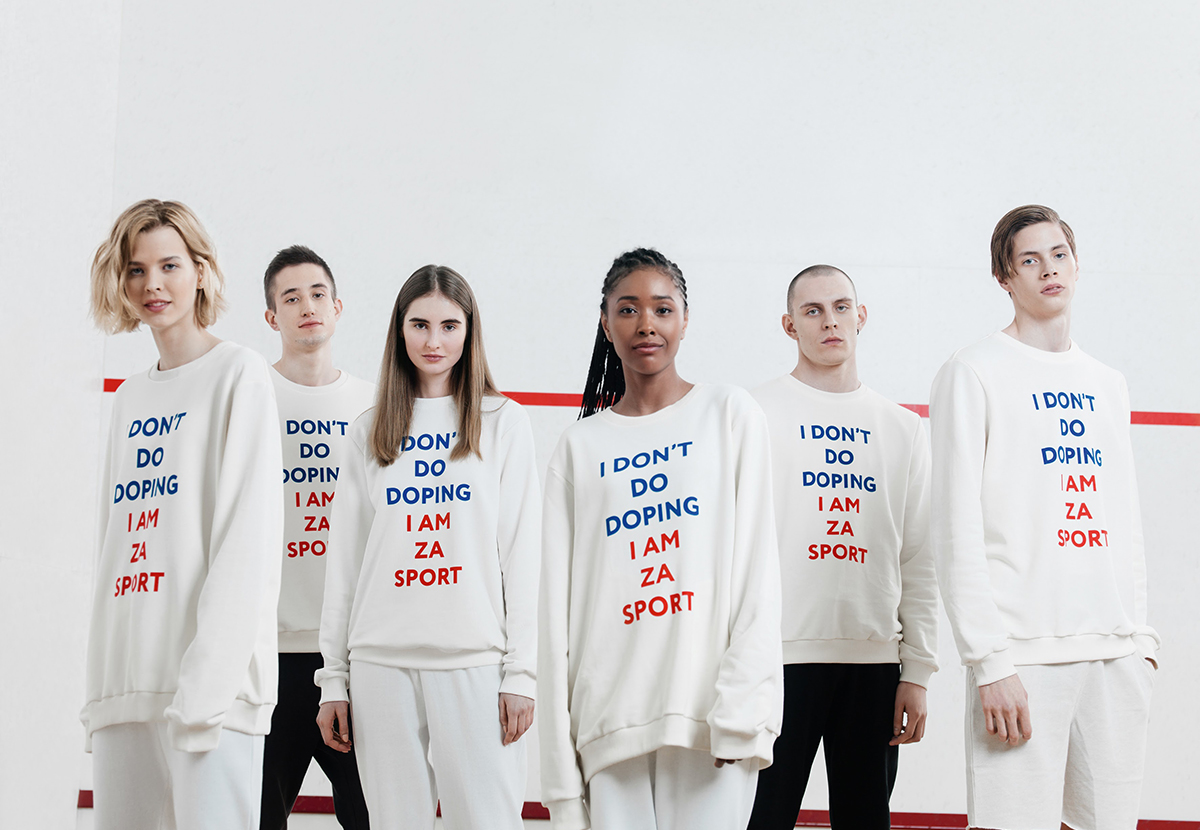
Norway’s Curling Team
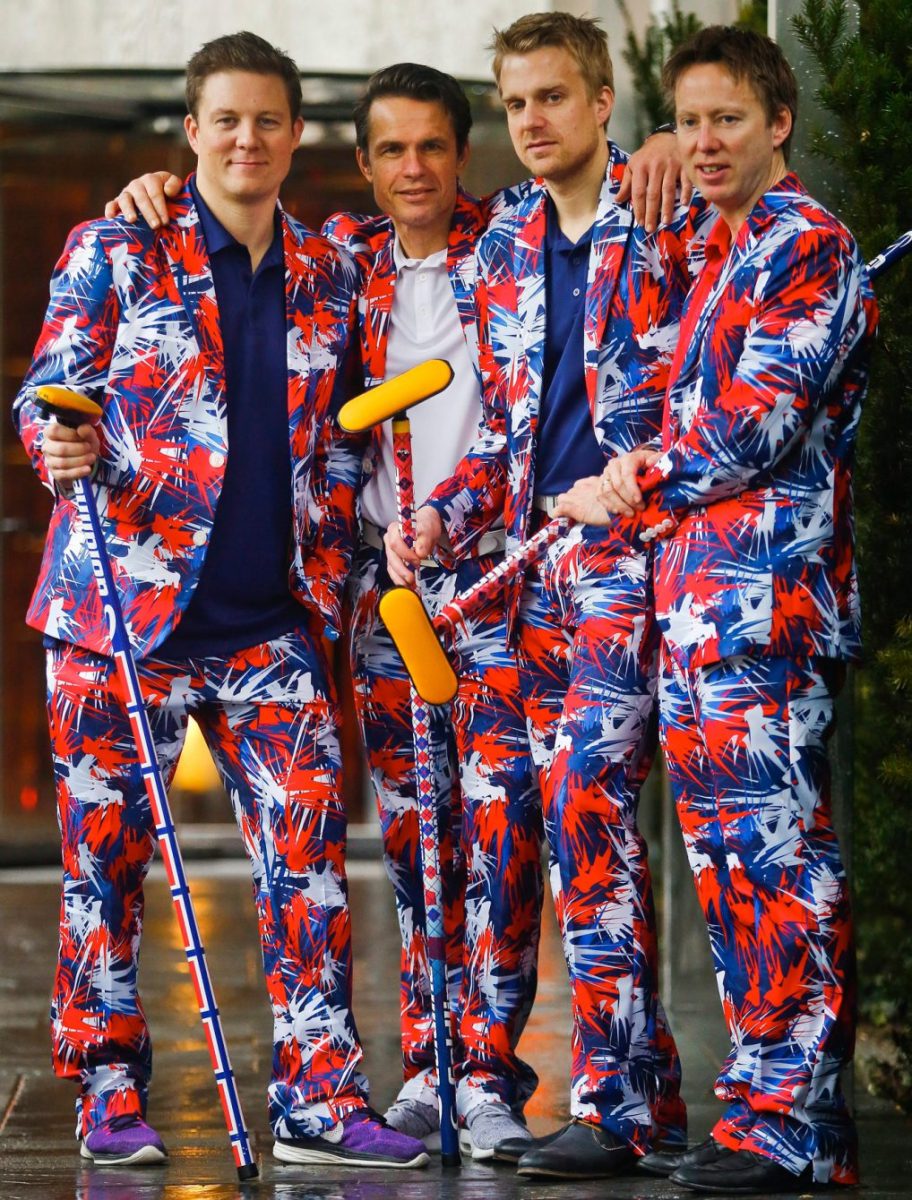
Norway’s Olympic Curling Team are keeping up tradition by wearing aggressively loud uniforms, a trend that first started with curler Thomas Ulsrud at the 2010 Vancouver Olympic Games. This year, the team have not only displayed their head-spinning variety of red, blue and white pants and fully-fledged suits, but also thrown in pink pants decorated with hearts in celebration of Valentine’s Day.
The designs are courtesy of Loudmouth Golf, a Sonoma County-based sportswear brand. The designs are certainly loud, enough to raise the profile of the forgotten sport, according to Anthony D’Orazio, admin for “The Norwegian Olympic Curling Team’s Pants” Facebook page.
Attention to the pants also means attention to the sport, with tangible results. Brazilian fans have already acquired their own curling rink, as well as assistance from the Norwegians to help set them up. “It’s a sport on the fringe of sport, but the pants have raised that profile,” D’Orazio told the ABC, “It’s having a real impact.”
The ShibSibs
Alex and Maia Shibutani, also known on YouTube as “The ShibSibs”, have gained attention these Olympics for their unbreakable partnership and beautiful performances. As siblings, they cannot use the tried and true romance theme in their performances, and so must focus on making the performance as elegant and flawless as possible.

This winning formula has allowed them to become the first Asian ice dance team to win a team bronze medal at the Olympics.
Their costumes also play a huge part in creating the finished product, with designer Lisa McKinnon, a former skater herself, ensuring that they would not be weighed down by heavy materials.
“I chose chiffon…because it gives a nice, full look,” which was ideal for their lively Latin-dance number, “but it’s not heavy,” she told The Post. “(Maia) can’t have it swinging her around while she does her twizzles.”
“It’s always better to have the least amount possible. I really understand what a costume needs in order to feel comfortable, so I try to stay away from complicated, constructed dresses. My trick is that I keep the actual dress as simple and stretchy as possible, and then I really make it stand out with the details,” says McKinnon.
For the first time, McKinnon found herself designing two of essentially the same dress for Maia.
“We never really make two of the same costume just to have a backup, because everything is fixable—if a hook comes off, you can fix that,” she said. “But I did make a second dress for Maia’s short program this year… because she and [her partner Alex] wanted to keep upping their game.”
Maia and Alex definitely upped their game, becoming the first Asian ice dance team to win a medal at the Olympics due to the winning formula of their technical skills, along with the vibrant pink number that McKinnon designed which went perfectly with their Mambo and Cha-Cha performances in their Short dance program.
Which Olympics moment did you like the best? Let us know in the comments!







